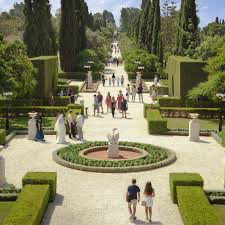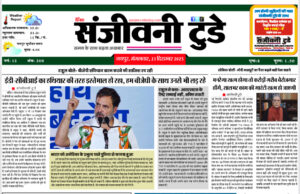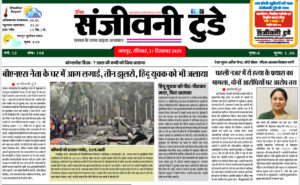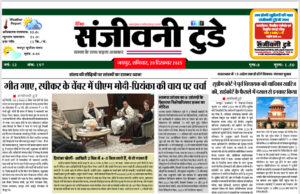In every corner of the globe, the Baháʼí communities and people of all backgrounds are gathering to commemorate the 205th and 207th anniversaries of the Twin Holy Birthdays of the Báb and Baháʼu’lláh respectively on November 2, 3, 2024 (I.e. on 19 ‘Ilm, 1 Qudrat, 181 B. E. (Baháʼí Era).
The messages of the Báb and Baháʼu’lláh have inspired a global community devoted to unity, justice, and peace.
Baháʼís regard the Báb and Baháʼu’lláh as twin Manifestations of God, both Prophets and Founders of the independent religions, whose Faiths ultimately came together as one.
In 2014 the Universal House of Justice announced that it was time for all Baháʼí Communities around the world to adopt the Baháʼí calendar. Now, Baháʼís and their friends all over the globe can truly celebrate these Twin Holy Days as one joyous festival.

They are observed on the first and the second day following the occurrence of the eighth new moon after Naw-Rúz, as determined in advance by astronomical tables using Tehran as the point of reference. This results in the observance of the Twin Birthdays moving, year to year, within the months of Mashíyyat, ʻIlm, and Qudrat of the Baháʼí calendar, or from mid-October to mid-November in the Gregorian calendar.
(Universal House of Justice (10 July 2014).
Prior to 2015 and a decision by the Universal House of Justice, these two holy days had been observed on the first and second days of Muharram in the Islamic lunar calendar in the Middle East, while other countries observed them according to the Gregorian calendar on 20 October (for the birth of the Báb) and 12 November (for the birth of Baháʼu’lláh).
For centuries, the peoples of the world have awaited the Promised Day of God, a Day when peace and harmony would be established on earth. The dawn of this New Day witnessed the appearance of not one but two Manifestations of God, the Báb and Baháʼu’lláh, Whose Revelations released the spiritual forces destined to transform society.
With the birth of the Baháʼí Faith the realization of two related but independent religions arising within one age was actualized.
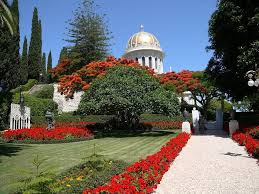
All the peoples of the world are awaiting two Manifestations, Who must be contemporaneous; all wait for the fulfillment of this promise. In the Bible the Jews have the promise of the Lord of Hosts and the Messiah; in the Gospel the return of Christ and Elijah is promised. In the religion of Muhammad there is the promise of the Mihdi and the Messiah, and it is the same with the Zoroastrian and the other religions. (‘Abdu’l-Baha, Some Answered Questions, US Baha’i Publishing Trust, 1990, p39).
The reason behind this rapid succession, and the unprecedented bounties released by the Revelation of Twin Manifestations, remains a mystery.
“That so brief an interval,” He [Baháʼu’lláh], moreover has asserted, “should have separated this most mighty and wondrous Revelation from Mine own previous Manifestation is a secret that no man can unravel, and a mystery such as no mind can fathom. Its duration had been foreordained.” (Shoghi Effendi, God Passes By, US Baha’i Publishing Trust, 1979, p92).
‘Abdu’l-Baha sets forth conclusively the true relationship between the twin Founders of the Faith, with this illuminating explanation:
The Revelation of the Bab may be likened to the sun. The station of Baha’u’llah’s Revelation, on the other hand, is represented by the sun’s mid-summer and highest station. By this is meant that this holy Dispensation is illumined with the light of the Sun of Truth shining from its most exalted station, and in the plenitude of its resplendency, its heat and glory. (Shoghi Effendi, God Passes By, US Baha’i Publishing Trust, 1979, pp99-100).
The notion of “twin Manifestations of God” is a concept fundamental to Baháʼí belief, describing the relationship between the Báb and Baháʼu’lláh. Both are considered Manifestations of God in their own right, having each founded separate religions (Bábism and the Baháʼí Faith) and revealed their own holy scriptures.
To Baháʼís, however, the missions of the Báb and Baháʼu’lláh are inextricably linked: The Báb’s mission was to prepare the way for the coming of Him whom God shall make manifest, who eventually appeared in the person of Baháʼu’lláh. For this reason, both the Báb and Baháʼu’lláh are revered as central figures of the Baháʼí Faith. A parallel is made between Baháʼu’lláh and the Báb as between Jesus and John the Baptist.
In the Kitáb-i-Aqdas, Baháʼu’lláh wrote that his birthday and that of the Báb “are accounted as one in the sight of God”.
It has been prophesied that in the time of these two Manifestations the earth will be transformed, the world of existence will be renewed. Justice and truth will encompass the world; enmity and hatred will disappear; all causes of division among peoples, races and nations will vanish; and the cause of union, harmony and concord will appear. (‘Abdu’l-Baha, Some Answered Questions, US Baha’i Publishing Trust, 1990, p39).
Further cementing the bond between these two Manifestations is the celebration of their Twin Birthdays. “The Festival of the Twin Birthdays” or “Twin Holy Days” celebrates the birth of the Báb on the first day of Muharram in the Islamic calendar (20 October 1819) and the birth of Baháʼu’lláh on the second day of Muharram (two years prior, on 12 November 1817). Regarding the Twin Birthdays, Baháʼu’lláh has stated:
These two days are accounted as one in the sight of God. (Baháʼu’lláh, The Kitáb-i-Aqdas, Baha’i World Centre, 1992, p225).
The Báb and Bahá’u’lláh were unique in religious history. Never before had a Manifestation of God served as the Herald of another Manifestation, as the Báb did for Bahá’u’lláh. As a result, They are known as the Twin Manifestations of God. This book shares the facts and major milestones of the lives of both Manifestations, in a format that is easy for children to compare.
A “Manifestation of God” is a Baháʼí concept used to define an intermediary between God and humanity, or what is commonly referred to as a Messenger or Prophet. The term “Twin Manifestations” refers to the unprecedented Revelation of the Báb and Bahá’u’lláh in rapid succession of one another.
The Báb and Baháʼu’lláh are revered as Central Figures of the Baháʼí Faith. Both are Manifestations of God in their own right. The lives and missions of the Báb and Baháʼu’lláh are inextricably linked. Together, these Divine Messengers are the twin Manifestations of God for this Era.
Bahá’ís believe that there is only one God, unknowable in His essence, Who is the Creator and absolute ruler of the universe. Bahá’u’lláh says, “It is not for him to pride himself who loveth his own country, but rather for him who loveth the whole world. The earth is but one country and mankind its citizens.”
The title Bahá’u’lláh means “the Glory of God” – and in the Book of Revelation, Jesus foretold the coming of the “Glory of God”:
Two years later, in 1819, Siyyid ‘Ali-Muhammad was born in Shiraz, a city in southern Persia. He later took the title, the Báb, meaning “the Gate.”
In 1844, in Shiraz, at age 25, the Báb declared that He had been called by God to be humanity’s gateway to a new and glorious future. As one of God’s Divine Educators, the Báb established a new religion. He called for the people to prepare for the coming of “Him Whom God shall make manifest,” another Divine Messenger Who would soon appear and initiate an Era of global justice, unity, and peace. The Báb was an advocate of the poor. He supported the advancement of women, universal education, and the study of science—radical ideas in that time and place.
The Báb’s revelation lasted only six years, from 1844 to His martyrdom in 1850. Both before and after His death, the Bábis suffered intense persecution from the Persian government and Shia Islamic clerical establishment, with more that 20,000 Bábis killed for their beliefs. Known as the “Dawn-Breakers,” the Báb and His early followers sacrificed everything in their quest to promulgate His new teachings:
From the beginning the Báb must have divined the reception which would be accorded by His countrymen to His teachings, and the fate which awaited Him at the hands of the mullas. But He did not allow personal misgivings to affect the frank enunciation of His claims nor the open presentation of His Cause. The innovations which He proclaimed, though purely religious, were drastic; the announcement of His own identity startling and tremendous. He made Himself known as the Qa’im, the High Prophet or Messiah so long promised, so eagerly expected by the Muhammadan world. He added to this the declaration that he was also the Gate (that is, the Báb) through whom a greater Manifestation than Himself was to enter the human realm. –( Introduction to The Dawn-Breakers, p. xxix.)
The Báb, referred to by Bahá’u’lláh as “My Forerunner,” as well as His Herald and Primal Point, prepared the way for Bahá’u’lláh’s revelation. Bahá’u’lláh described the Báb’s supreme sacrifice as the one “Who laid down His life for this Great Announcement.” – Epistle to the Son of the Wolf, p. 140.
Bahá’u’lláh pledged His reciprocal support to the Báb in this statement:
Though the Báb was a Manifestation of God and the Founder of a great religion, He also perceived Himself to be a forerunner and had ardently urged His followers to seek out the second Manifestation, cryptically referred to as “He Whom God shall make manifest,” who would emerge “in less than the twinkling of an eye” after His own mission, to complete the unique appearance of twin Manifestations in a single age.
It was not until 1863, nineteen years after the inception of the Bábi Faith (thirteen since the Báb’s death), that Bahá’u’lláh publicly declared Himself as not only the One promised by the Báb, thus yielding that Faith’s “destined fruit and revealing its ultimate purpose” but indeed, He proclaimed to be the Promised One of all Ages.
Then, in 1863 Bahá’u’lláh fulfilled the Báb’s prophecies by proclaiming and establishing the Bahá’í Faith, which eventually subsumed the Bab’s followers and became a global religion.
Bahá’u’lláh made pivotal comments about the Bab’s revelation. He described the Báb in personal terms as a necessary catalyst in their combined enterprise to build a new society. The Báb, allied with Bahá’u’lláh, was a “twin figure,” a Prophet in His own right invested with the authority of presiding with Bahá’u’lláh over the destinies of this new dispensation.
Clearly, the Báb willingly gave up His life for the principles of the new Cause, doing everything in his power to assist the readiness of the people for the coming of Bahá’u’lláh. After the final horrific massacres of 1852, with almost no Bábis left to revive the Faith of the Báb, the task fell to the leading nobleman from Persia, Bahá’u’lláh. Exiled from His native land in the winter months of 1853, Bahá’u’lláh went to Baghdad and provided the extinguished flame of the Báb’s new faith the chance to spring back to life.
Bahá’u’lláh’s son, ‘Abdu’l-Baha made it very clear that the Báb played a gigantic role in the establishment of the Bahá’í Faith:
Consider how the Báb endured difficulties and tribulations; how He gave His life in the Cause of God; how He was attracted to the love of the Blessed Beauty, Bahá’u’lláh; and how He announced the glad tidings of His manifestation. We must follow His heavenly example; we must be self-sacrificing and aglow with the fire of the love of God. – Abdu’l-Baha, The Promulgation of Universal Peace, p. 138.
No understanding can grasp the nature of His Revelation, nor can any knowledge comprehend the full measure of His Faith. … He (the Báb) is the Revealer of the divine mysteries, and the Expounder of the hidden and ancient wisdom. – The Book of Certitude, p. 242.
The Báb was the Gate who announced a new day, His mission to close the old era and open a new one. The Báb prepared society for a greater figure, arising courageously against enormous odds to announce his revelation to the religious and state leaders of His time. His life appeared to end in tragic loss and sorrow, but he valiantly did everything in His power to prepare the way for the coming of Bahá’u’lláh—and succeeded. While most of the Báb’s leading disciples died at the hands of the oppressors, a core group of followers did recognize the fulfillment of the words of the Báb in the person and message of Bahá’u’lláh. In this way, the Báb exerted a tremendous, incalculable influence on the history of religion and the establishment of the first truly global movement for peace and unity.
Bahá’u’lláh wrote that humanity would never know the importance of the knowledge and influence of the Báb, that irresistible youth from Shiraz:
In April of 1863, Bahá’u’lláh announced that He was the Promised One foretold by the Báb and all of the Divine Messengers of the past. Baha’u’llah’s Mission was to spiritually re-awaken humanity and unite all the peoples of the world. Through Bahá’u’lláh God has released a fresh, far-reaching, creative spiritual energy into the world. Bahá’u’lláh’s teachings shed new light on God’s eternal relationship with humanity and offer a vision of infinite hope and healing.
The Baháʼí Faith has eleven holy days, which are important anniversaries in the history of the religion. On nine of these holy days, work is suspended.
Bahá’ís commemorate 11 holy days each year. These occasions are usually observed with community gatherings in large or small settings, with programs befitting the significance of the day.
2nd and 3rd November 2024 are Holy days in the Bahá’í calendar when believers suspend work and school.
The Baháʼí Faith, established in the mid-19th century, promotes the teachings of Bahá’u’lláh, who calls for universal unity, equality, and justice. The Faith has its roots in Iran, expanding to all parts of the world, drawing millions of followers united in a commitment to building societies based on the principles of love, service, and unity.
The global commemoration of the Twin Holy Birthdays stands as a symbol of hope that humanity can transcend its divisions and build a future defined by unity in diversity.
Compiled by:-
Jaya Raju Thota, India


